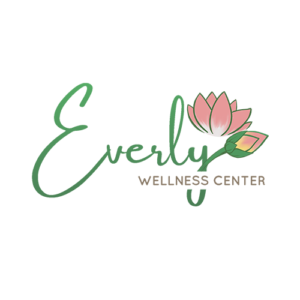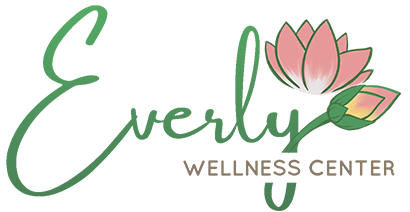- (416) 831-2368
- [email protected]
- Mon. - Fri. 10a.m.–8p.m. Sat. & Sun. 10a.m.–7p.m.
Q & A
- Acupuncture
01.What is Acupuncture?
Acupuncture is one of the oldest and most commonly used medical therapies in the world. It originates in China more than 2,000 years ago. Acupuncture involves the gentle insertion of hair-thin needles into specific points on the body to stimulate the body’s own natural healing ability.
02. How does Acupuncture Work?
Traditional Chinese Medicine (TCM) holds that energy, called Qi (pronounced “Chee”) runs in regular pathways throughout the body. These energy pathways, called Meridians, are like rivers flowing through entire body, nourishing organs and tissues.
When the flow of Qi is smooth and unobstructed, the body results in good health. However, if for any reason this flow is blocked, pain, illness and disease will occur. Acupuncture works by unblocking the obstructions and restoring the smooth and balanced flow of Qi in the body.
03. Do the needles hurt?
Acupuncture needles are sterilized, single-use only and are disposable. They are so thin that only about 1/10 to 1/15 of the size of a hypodermic injection needle. The insertion of acupuncture needles goes unnoticed by most people while some may feel a light pinch.
Once the needles are in place, you may have a feeling of warmth, tingling, numbness either locally or in a part of the body distant from the needle. These sensations are normal and are an indication that the body Qi has been stimulated.
04. How many treatments do I need?
The number and frequency of treatments will vary based on the duration, severity and nature of your condition, and can range from once a week to 2-3 times a week for approximately 4-6 weeks. Many acute conditions can be resolved more quickly, often requiring only one or two treatments.
05. What conditions can Acupuncture help?
The following is a partial list, according to W.H.O. (World Health Organization), of the disorders which acupuncture is beneficial for:
Musculoskeletal(肌肉骨骼問題): sport injuries, pain of lower back/neck/shoulders/joints, arthritis, repetitive strain injury, carpal tunnel syndrome.
Neurology(神經内科問題): headaches, migraines, stroke recovery, Parkinson’s, dizziness, sciatica, Bells Palsy, trigeminal neuralgia, muscular atrophy.
Gynaecological(婦科問題): PMS, irregular menstruation, menopausal problem, infertility.
Digestive(消化系統問題): abdominal pain, heartburn, ulcer, diarrhea, constipation, nausea, vomiting, indigestion, Irritable Bowel Syndrome.
Respiratory(呼吸系統問題): sinusitis, common cold allergies, bronchitis, asthma, earache.
Sleep and stress disorder(睡眠和壓力問題): insomnia, depression, anxiety, addiction withdrawal.
Skin conditions(皮膚問題): acne, eczema, fibromyalgia, scars lightening, frown line/wrinkles lightening and elimination.
Other(其他問題): weight control, fatigue, low immunity.
- Deep Tissue Massage
01.What is Deep Tissue Massage?
When there is chronic muscle tension or injury, there are usually adhesions (bands of painful, rigid tissue) in muscles, tendons, and ligaments. Adhesions can block circulation and cause pain, limited movement, and inflammation. Deep tissue massage in Richmond Hill works by physically breaking down these adhesions to relieve pain and restore normal movement. To do this, the massage therapist uses massage oil and often uses direct deep pressure. Muscles must be relaxed in order for the therapist to reach the deeper musculature.
02. How does Deep Tissue Massage work?
During the massage session, the therapist uses his or her hands, elbows, fingertips, knuckles or forearms to stimulate the muscles and reduce adhesions. The slower pace of this type of massage means that every muscle receives the optimal level of care. Guests may be asked to breathe deeply throughout the session, especially when tense areas are being targeted. Deep breathing supplies the muscles with plenty of oxygen and can ease discomfort
03. Does Deep Tissue Massage Hurt?
At certain points during the massage, most people find there is usually some discomfort and pain. It is important to tell the massage therapist when things hurt and if any soreness or pain you experience is outside your comfort range. There is usually some stiffness or pain after a deep tissue massage, but it should subside within a day or so. The massage therapist may recommend applying ice to the area after the massage.
04. Benefits of Deep Tissue Massage
Deep tissue massage usually focuses on a specific problem, such as chronic muscle pain, injury rehabilitation, and the following conditions:
- Chronic pain
- Lower back pain
- Limited mobility
- Recovery from injuries (e.g. whiplash, falls, sports injury)
- Repetitive strain injury, such as carpal tunnel syndrome
- Reflexology
01.What is Reflexology?
Reflexology is a focused pressure technique usually directed at the hands or the feet. It is based on the theory that there are zones and reflexes that correspond to and relate to all organs, glands and body parts in the entire body.
02. What are the Benefits?
We all have stress that we deal with in our daily lives and often we tend to ignore it or mask it with either stimulants or suppressants. The goal for a Reflexologist is to help you eliminate stress naturally through a Reflexology session and return your body back to its normal state of rest or “Homeostasis”. Once your body achieves this state, it begins to function better and you in turn are more relaxed. Clients have spoken of the benefits that they have noticed and they range from:
- Improved digestion
- Improved sleep
- Regular menstrual cycles
- Enhanced circulation
- Muscle tension relief throughout the entire body
- Clarity
- Deep relaxation after the session
- Osteopathy
01.What is Osteopathy?
Osteopathy is a form of manual therapy which recognizes the important link between the body’s structure and the way it functions. It is a holistic form of healthcare where practitioners consider how the skeleton, joints, muscles, nerves, connective tissue, circulation and internal organs function together as a unit.
By taking the whole body into consideration, osteopathic manual practitioners work to identify the cause of a client’s injury and treat more than just the symptoms. For example, a common presenting complaint is clients experiencing lower back pain. One would expect treatment to be focused locally at the back where the pain is occurring. However, via a detailed assessment our osteopathic practitioners will work to try to understand why the back began hurting in the first place. This may lead the practitioner to look at your feet and foot posture, knees or look at anterior tightness through the hips.
Our osteopathic manual practitioners understand that the body is a complex functional unit where the musculoskeletal system is also closely related to and dependent on the circulatory, respiratory, neurological and lymphatic systems. Therefore, osteopathic manual practitioners take into account all of these systems in order to formulate a holistic treatment plan.
At Everly Wellness Center our osteopathic manual practitioners are Toronto trained and certified following an intensive 4-year full time degree including a Bachelor of Science and a Masters of Osteopathy. Following accreditation our practitioners have all undergone further training in various fields and regularly keep up to date with current research with ongoing professional development. They are versed in a range of subjects from extensive anatomical knowledge, to nutrition and exercise rehabilitation allowing our practitioners to deliver the highest quality of osteopathic care in Toronto.
02. What does treatment involve?
During an initial consultation our osteopathic manual practitioners will ask a range of questions to identify the extent of the clients’ injury and develop a clinical picture. They will then use skilled evaluation and diagnostic techniques to identify the areas of dysfunction which will help to identify the cause of the clients’ complaint.
Treatment is then based on a holistic understanding of the body and employs hands on techniques. This includes massage, stretching, gentle mobilization and muscle energy techniques, as well as dry needling and exercise prescription when appropriate.
Treatment also includes advice on workplace ergonomics, sleeping posture and identifying any regions of weakness to then implement an exercise program to prevent the injury re-occurring.
03. What can osteopathic manual practitioners treat?
Osteopathic manual practitioners can treat a wide range of conditions and can support their clients from infancy all the way through to 99 years of age (or older!) Examples of conditions that osteopathic manual practitioners see include:
- Back pain
- Neck pain
- Headaches
- Sporting injuries
- Joint pain
- Tendonitis
- Pregnancy
The judges were amazed that one product was able to do all of the following:
- Remove Wrinkles & Fine Lines
- Remove Eye Wrinkles & Dark Circles
- Reduce Eye Puffiness & Under Eye Bags
- Reduce Dark Spots, Age Spots & Sun Spots
- Moisturize
Dedicated to help you...
Feel Better Today

Quick Links
Menu
Contact Us
215 Boake Trail
Richmond Hill, ON L4B 3Z6
Hours
Mon. – Fri. 10a.m.–8p.m.
Sat. & Sun. 10a.m.–7p.m.
© 2020 Everly Wellness Center | Web Design By Caiden Media
